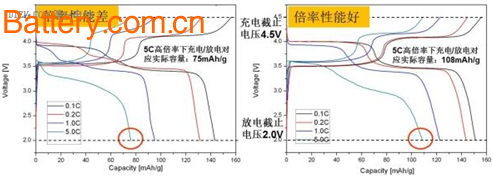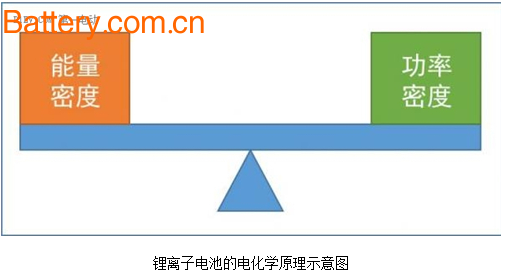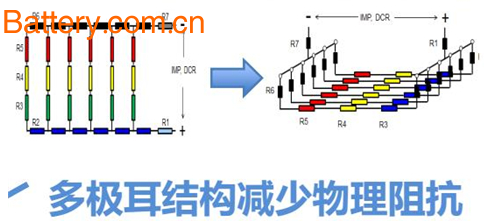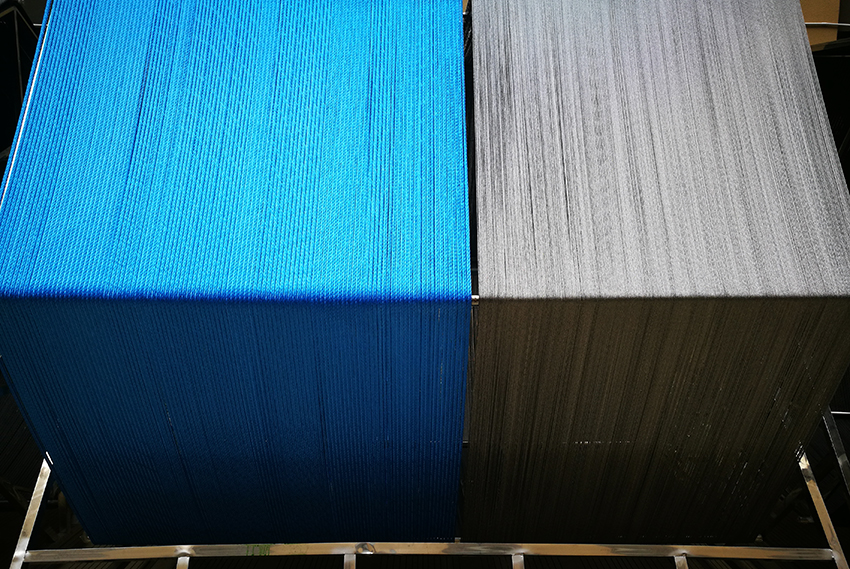In recent years, there have been a lot of big news about battery fast charging, but among them, Shantou accounts for the majority, and the really reliable technology has been in a low-key state. The author found that the analysis of fast charge, science articles have been relatively few, many people have many questions about fast charge. In this paper, the author first carries out the basic science, and then from the material point of view, analyzes the requirements of lithium battery fast charging technology for battery materials and composition, and will briefly analyze the occasions that need fast charging technology and the significance of the technology, mainly Object-oriented is a friend who needs a certain understanding of technology in related industries such as materials, batteries, automobiles, energy storage, investment, and policies.
Several scientific answers to common questions about fast charge
First, the concept of "C" in battery charging will be introduced. This concept is very important and is the most commonly used term in battery discussion and analysis. The rate abbreviation in the battery is Current-Rate - "AC rate is a measure of the rate at which a battery is discharged relative to its maximum capacity. A 1C rate means that the discharge current will discharge the entire battery in 1hour." The battery discharges the current value output by its rated capacity within a specified time. 1C indicates the amount of current required to discharge the battery power in one hour. 2C indicates the amount of current required to discharge in 0.5 hours. The higher the magnification, the greater the current. (Related reference: How to understand the lithium-ion battery rate is larger and the capacity is smaller?)
After that, the definition of fast charge: As the name suggests, fast charge is the process of fast charging the secondary rechargeable battery. In fact, how fast is fast, how fast is not too fast and there is no particularly strict definition, but under normal circumstances Simplification is understood as the system of charging in less than one hour (ie, the charging rate is greater than 1 C). I know that people often consult the author about various fast charging problems. Here, the author must first emphasize several concepts for science popularization:
1) The charging of the battery is generally based on measuring the voltage to determine the degree of charge and discharge. The use of the coulomb is a small number, and in this case, the charge/discharge display of the battery is actually only a real-time voltage conversion relationship of the battery. Compared with slow charging, fast charging will bring a lot of overvoltage (the current becomes larger, U=IR, the internal resistance of the battery will contribute more overvoltage), and the chemical diffusion reaction will not keep up. It may be charged with a high voltage value on the surface and the display is very high. In fact, it is not charged with so much power. An example is shown below: 
In the figure, after the same material is optimized by different processes, the rate performance is different (the left difference is right), and in the 5C high rate charge and discharge system, although it is charged to 4.5V (indicated as "full"), it is actually available. The capacities vary widely, one at 75 mAh/g and one at 108 mAh/g.
2) So in fact, any battery can actually charge "full" power. In this case, the "full" is actually only the voltage is raised, and it cannot be directly proportional to the charged electricity/energy. Moreover, at these times, high current charging will cause the Joule heating effect to be aggravated (Q=I2Rt), and bring a series of problems such as material side reaction decomposition and gas production in the battery, and the risk coefficient suddenly increases, and the battery life under this condition Not to mention, the life of non-power batteries will inevitably be greatly shortened: therefore, most manufacturers themselves are safe and reliable. For comprehensive consideration, manufacturers have designed circuits to limit the upper limit of charging current for batteries, so that everyone can not use them. Fast charge.
3) So if the battery wants to charge quickly, the power-related performance requirements are higher, and the low internal resistance is an important one (Q=I2Rt, the small resistance value R can reduce the Joule heat). In this case, use a high-conductivity electrode material (carbon coating, modification to increase the lithium diffusion coefficient, reduce the particle size to shorten the diffusion path), use more conductive agent, and apply a thinner electrode (to make the mass transfer diffusion distance change) Short) are typical design ideas for power fast charging batteries. These design concepts will of course conflict with the goal of pursuing energy density. Fish and bear's paw can't have both. For details, please refer to the author's previous article, "The light is said to be filled for a few minutes, and other performances are not fast charging technology." It’s a rogue.
4) A power battery that satisfies the characteristics described in 3) is more suitable for fast charging than an energy battery, which means that its internal resistance is small, charging heat is low, side effects are less, and safety performance is better. Energy type / those batteries that are not suitable for fast charge, the voltage and charge / energy in the high current fast charge is better, the popular saying is: less heat, more safe, really can be filled then More electricity, not just showing that it can be charged.
5) A simple criterion that is often talked about. If someone brags about his fast charging technology, you must convert the charging power, and then look at the charging power that needs to correspond to a thick wire. The single criterion is enough to screen 90%. Not reliable, fast recharge news.
Fast charge battery, requirements for all parts of the battery?
If the battery wants to be fast charged, its power-related performance requirements are higher. For the battery, if you want to improve the power performance, you need to work hard in all aspects of the battery, including the positive electrode, negative electrode, electrolyte, diaphragm and structural design. 
1) Positive
In fact, almost all kinds of cathode materials can be used to make fast-fill batteries. The main performances required to be guaranteed include conductance (reduction of internal resistance), diffusion (guaranteed reaction kinetics), longevity (no need to explain), and safety (not required). Explain), proper processing performance (the specific surface area can not be too large, reduce side reactions, for safety services). Of course, the problems to be solved for each specific material may vary, but our common cathode materials can be optimized through a series of optimizations, but different materials are also different:
A. Lithium iron phosphate may be more focused on solving problems of conductance and low temperature. Carbon coating, moderate nanocrystallization (note that it is moderate, definitely not as fine as possible, simple logic), the formation of ionic conductors on the surface of particles is the most typical strategy, there are a large number of literature and corporate research reports In China, companies such as CATL and BYD have their own characteristics in the optimization of lithium iron phosphate.
B, the ternary material itself has a good conductance, but its reactivity is too high, so the ternary material has little work of nanocrystallization (nanocrystallization is not an antidote to the performance improvement of the metallurgical material, especially in the field of batteries. There are sometimes many reactions in the system. More attention is paid to safety and inhibition (and electrolyte) side effects. After all, the main goal of ternary materials is safety. The recent battery safety accidents are also frequent. Put forward higher requirements.
C, lithium manganate is more important for life, there are a lot of fast-charge batteries of lithium manganate on the market.
2) Negative electrode
When the lithium ion battery is charged , lithium migrates to the negative electrode. The high overpotential caused by the fast charge and high current will cause the negative electrode potential to be more negative. At this time, the pressure of the negative electrode rapidly accepting lithium will become larger, and the tendency to generate lithium dendrite will become larger. Therefore, the negative electrode must not only satisfy the lithium diffusion during fast charging. The kinetic requirements, but also to solve the safety problems caused by the increased tendency of lithium dendrite formation, so the main technical difficulty of the fast charging core is the insertion of lithium ions in the negative electrode.
A. At present, the dominant anode material in the market is still graphite (about 90% of the market share), the root cause is no him - cheap (you are too expensive every day, exclamation mark!), and the comprehensive processing performance and energy of graphite The density is relatively good, and the disadvantages are relatively few. Of course, graphite anodes also have problems. The surface is sensitive to electrolytes, and the lithium intercalation reaction has strong directionality. Therefore, it is mainly necessary to work hard to carry out graphite surface treatment, improve its structural stability, and promote the diffusion of lithium ions on the substrate. In the direction, CATL has done a lot of very advanced work in this area, effectively improving the overall performance of the graphite negative electrode.
B. Hard carbon and soft carbon materials have also developed in recent years: hard carbon materials have high lithium insertion potential, micropores in the materials, and good reaction kinetics; and soft carbon materials have good compatibility with electrolytes, MCMB The materials are also very representative, but the hard and soft carbon materials are generally low in efficiency and high in cost (and Imagine that graphite is as cheap as I hope from an industrial point of view), so the amount is far less than graphite, and more used in some specialties. On the battery.
C, someone will ask the author how to lithium titanate. To put it simply: lithium titanate has the advantages of high power density, safer, and obvious disadvantages. The energy density is very low, and the calculation cost is high according to Wh. Therefore, the author's view on lithium titanate batteries has always been: it is a useful technology that has advantages in specific situations, but it is not suitable for many occasions where the cost and cruising range are high. For specific analysis, see the author's article: http://
D, silicon anode material is an important development direction, Panasonic's new 18650 battery has begun commercial process for such materials. But how to achieve a balance between the pursuit of performance in nanotechnology and the battery industry's general micron-scale requirements for materials is still a challenging task.
3) diaphragm
For power batteries, high current operation provides higher requirements for safety and longevity. Diaphragm coating technology is inseparable. Ceramic coated membranes are rapidly being pushed away due to their high safety and the ability to consume impurities in the electrolyte. Especially for the safety of ternary batteries, the safety effect is particularly remarkable. The main system currently used in ceramic diaphragms is to coat alumina particles on the surface of conventional diaphragms. A relatively novel approach is to coat solid electrolyte fibers on the membrane. Such membranes have lower internal resistance and mechanical support for the membrane. Excellent, and it has a lower tendency to block the diaphragm hole during service. After the coating, the separator has good stability. Even if the temperature is relatively high, it is not easy to shrink and deform, resulting in short circuit. Jiangsu Qingtao Energy Co., Ltd., technical support of the Academic Researcher of Tsinghua University School of Materials, has some representative aspects in this respect. Work, the diaphragm is shown below. 
4) Electrolyte
The electrolyte has a great influence on the performance of a fast-charged lithium ion battery. To ensure the stability and safety of the battery under fast charge and high current, the electrolyte should meet the following characteristics: A) can not be decomposed, B) the conductivity is high, C) is inert to the positive and negative materials, can not React or dissolve. If these requirements are to be met, the key is to use additives and functional electrolytes. For example, the safety of ternary fast-charged batteries is greatly affected by it. It is necessary to add various anti-high temperature, flame-retardant and anti-overcharged additives to protect them to a certain extent. The problem of the old lithium titanate battery, the high temperature flatulence, also depends on the high temperature functional electrolyte.
5) Battery structure design
A typical optimization strategy is the stacked VS winding type. The electrodes of the laminated battery are equivalent to a parallel relationship, and the winding type is equivalent to a series connection. Therefore, the internal resistance of the former is much smaller, and it is more suitable for the power type. occasion. In addition, you can work hard on the number of poles to solve internal resistance and heat dissipation problems. In addition, the use of high-conductivity electrode materials, the use of more conductive agents, and the coating of thinner electrodes are also strategies that can be considered.
The occasion and meaning of fast charging
The author has written an article that criticizes some of the "results" quickly, but the author does not think that fast charging is not important, but emphasizes a few points:
1) You can't just look at the fast charge performance. Regardless of the performance of other products (even the volume power density is not dare to report, it is possible to make a battery volume expansion several times), the news is not reported, and the information asymmetry is used to blind the government and deceive consumption. , flicker investors. 
If this product with high energy density can publish a charge and discharge curve, power density, volume related parameters, and cost, let us have an in-depth understanding of this product, just fine.
2) No technology is omnipotent, and the ruler has a short length. In the pursuit of energy density as the primary contradiction (such as electric vehicles that need long battery life), the overemphasis on power density seems to be confused. In this case of emphasizing energy density, this kind of avoidance is a light publicity act. In the author's previous article, "The light is said to be filled for a few minutes, and other fast-charging technologies that do not say anything, they are all hooligans" have already analyzed a lot in this respect.
3) But there are also some situations where power density is more important than energy density, such as fixed lines, buses that stop charging at each stop, and hybrid cars , as well as batteries that are responsible for smoothing the instantaneous fluctuations of the new energy grid. / Capacitor / flywheel, all have high requirements for power performance, here you can put the priority of power density to the front, the traditional algorithm to measure the cost of Wh often need to make corresponding corrections (such as W Computing costs).
Fast charging is very intuitive for the convenience of our daily life. The core is nothing more than saving time. If the electric car can recover the maximum life in a few minutes like a gasoline car, the mobile phone is quickly filled up (such as the technology of mobile phones such as VIVOOPPO). CATL has made a considerable contribution to providing fast-charge batteries. It is not always anxious for power. However, the potential contribution of fast-charge batteries is far more than this. For example, the rapid spread of power-type energy storage devices can greatly help the absorption of new energy sources, especially in dealing with the problem of gap and volatility. Power storage equipment can also be used in the power grid. It takes on more complex service functions, and its advantages of quick response can be used in many occasions in the power grid, bringing comprehensive benefits, and is an important part of intelligent grid and building energy Internet.
If the above expectations can become reality, it will bring great convenience to life. It is entirely possible to replace the traditional primary energy with electricity to make a truly revolutionary change in the operational structure of human society. However, the ideal of romance is good. There are still many technical difficulties to overcome in reality. At present, many people in the electrochemical industry believe that in recent years, battery technology may have more incremental incremental improvements (incremental Improvement), the probability of a revolutionary breakthrough is not so large (revolutionary breakthrough).
Postscript: This article focuses on the analysis of the science of fast charge technology, the preliminary analysis of the requirements and uses of battery materials. In the sequel of this article, we will focus on the analysis of the unreliable fast charging technology problem, and analyze the fast charging battery technology of several leading domestic manufacturers with the application of electric bus. Please pay attention to the second article.

SAFETY
One of the most important features of synthetic winch lines is the safety benefits they provide. Synthetic lines do not store energy while under load and are very lightweight. This means that if something should go wrong and the rope breaks, it will harmlessly fall to the ground. Steel wire rope on the other hand, stores a tremendous amount of energy under load, and in the case of breakage, will violently snap back and whiplash. This can cause serious injury to people involved in the winching procedure.
Synthetic winch lines don`t have any wire splinters or burrs like steel wire ropes commonly do, so there is no chance of getting a surprise hand injury while handling a synthetic line.
Finally, there is the issue of weight. Synthetic winch lines are much lighter than their steel counterpart, which reduces the chance of strain and body fatigue when handling lines in winching procedures. This may not be as noticeable when using smaller diameter lines, but in applications that involve very heavy equipment, steel wire rope lines and extensions can weigh upwards of 200 pounds and require multiple people to handle them. Synthetic winch lines are up to 80% lighter, making them much easier to carry and handle.
STRENGTH
Synthetic winch lines have breaking strengths 30-90% higher than steel wire rope. This is a tremendous increase and allows for smaller diameter winch lines to be used when switching to synthetic, therefore increasing the amount of line that can be installed on the winch.
WEIGHT
Synthetic winch lines are up to 80% lighter than steel wire rope. Aside from the safety benefits mentioned above, this offers some obvious advantages. On a typical recreational off road vehicle, switching to a Synthetic Winch Line and an Aluminum Hawse Fairlead will shave up to 30 pounds of weight from the front of the vehicle. Rigging vehicle extractions is also much easier, especially in loose, hilly terrain. Synthetic winch lines are so light, they even float.
Kinetic Recovery Rope,4X4 Winch Cable,Jeep Recovery Rope,Dyneema Winch Rope
Shanghai Uwin Automotive Product Co.,Ltd , https://www.uwinoffroad.com